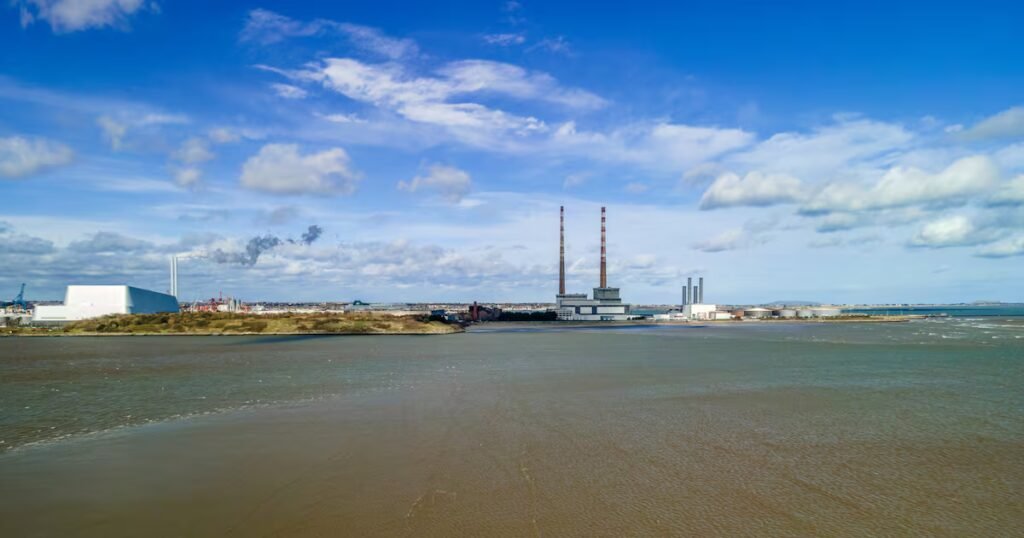As more renewables, such as wind and solar power, are connected to Ireland’s power grid, there is an increasing requirement for backup to provide electricity when the wind doesn’t blow and the sun doesn’t shine.
Several new gas-fired generating plants will be connected to the system in the coming years as a result. Some larger industrial producers have also developed their own gas-fired power plants to ensure continuity of energy supply.
The question arises, therefore: how can the country successfully decarbonise if it requires increased gas generation to back up renewables?
Ireland’s path to net zero by 2050 is built on ambitious renewable energy targets, but the reality of intermittency in wind and solar generation means gas remains essential for system reliability, at least in the short term, says Derarca Dennis, EY Ireland assurance partner and sustainability services lead.

“A dual track approach is required to ensure that Ireland’s decarbonisation strategy is successful. This requires rapid renewable deployment, short-term reliance on gas for grid stability and long-term transition to green gases and storage technologies. This dual track approach is not a contradiction but a pragmatic response to the technical and economic realities of energy transition. Success will depend on policy alignment, investment in infrastructure, and public-private collaboration.”
Ireland’s Climate Action Plan 2025 (CAP25) also recognises that increased gas generation is necessary to back up intermittent renewables. This is a short-term emissions compromise to ensure energy security and grid reliability, Dennis says.
Ireland’s long-term carbon reduction goals do require certain trade-offs, some of which are already being acknowledged and debated across government, industry, and sustainability circles. These include sectoral burden-sharing versus national targets. High-emitting sectors such as transport, industry, construction and agriculture, will need to shoulder disproportionate responsibility to meet Ireland’s 51 per cent emissions reduction target by 2030.
Apart from wind and solar, there is a range of other alternatives to gas, Dennis notes. “Biomethane is emerging as a cornerstone of Ireland’s low-carbon strategy, offering the dual benefit of being carbon neutral and locally produced, supporting rural economies. Hydrogen is positioned as the primary substitute for natural gas in Ireland’s future energy mix. The built environment is shifting away from gas through district heating systems in urban areas and retrofitting homes to improve energy efficiency and reduce reliance on fossil fuels.”
Good progress is being made overall in renewables and in terms of adoption by industry, says Enterprise Ireland’s Kevin Whiriskey. “We’re getting to periods where we have 90 per cent renewables on the grid. Onshore has been very successful and solar deployment has been a huge success over the last three years. I have yet to come across a company that has regretted installing solar power. Offshore has been a little slower but is still progressing well.”
Nonetheless, the highly changeable nature of the Irish weather means we still have a high reliance on gas. If consumption of renewable energy on the grid, however, could be more closely aligned with the production needs of industry, that could result in substantial savings. The solution lies in developing increased capacity to purchase electricity when it is cheaper and to store it for use when needed. Thermal heat storage is one way in which this could be done efficiently.
Electrification of large industry is recognised as a core way of decarbonising the country but problems remain in terms of grid connection, among others. “Companies are limited in the amount of electricity they can import and therefore they are limited in their ambitions for how much and how quickly they can electrify their processes,” says Whiriskey.
“If companies can get a flexible grid connection – a connection that’s available only when there is capacity on the grid, they can use energy storage such as thermal on their site to take advantage of this. Think [of] dairy companies who use a lot of heat on site for drying milk, beverage companies such as whiskey and beer for their fermentation process as well as smaller scale energy users. Anywhere companies have a heat load, we are seeing a desire to move away from fossil fuels to electricity.”

Power Capital is one firm that is working towards the objective of cleaner electricity generation.
“In 2025, our operational solar farms contributed up to 7 per cent of electricity at peak times, helping reduce Ireland’s carbon footprint. As we integrate battery storage into our projects, we’re strengthening grid stability and enabling renewables to play a bigger role in balancing supply and demand,” chief executive Justin Brown says.
“While increased gas generation may be necessary in the short term, there are viable alternatives. A mix of solar, wind, storage, demand flexibility and interconnection provides a credible pathway to reduce reliance on gas over time.”

